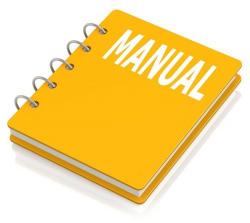Ford 1992 Models Factory Service & Shop Manual
Catalog:
Model:
Complete workshop & service manual with electrical wiring diagrams for Ford 1992 Models (Aerostar, Bronco, Capri, Cargo, Continental, Cougar, Crown Victoria, Econoline, Escort, Explorer, B-Series, F-Series, F-Super Duty, Festiva, Grand Marquis, L-Series, Mark VII, Mustang, Probe, Ranger, Sable, Taurus, Tempo, Thunderbird, Topaz, Town Car, Tracer). It's the same service manual used by dealers that guaranteed to be fully functional and intact without any missing page.
This Ford 1992 Models service & repair manual (including maintenance, overhaul, disassembling & assembling, adjustment, tune-up, operation, inspecting, diagnostic & troubleshooting…) is divided into different sections. Each section covers a specific component or system with detailed illustrations. A table of contents is placed at the beginning of each section. Pages are easily found by category, and each page is expandable for great detail.
MODELS COVERED:
Aerostar, Bronco, Capri, Cargo, Continental, Cougar, Crown Victoria, Diesel Engine, Econoline, Escort, Explorer, F-& B-Series, F-Series, F-Super Duty, Festiva, Grand Marquis, L-Series, Mark VII, Mustang, Probe, Ranger, Sable, Taurus, Tempo, Thunderbird, Topaz, Town Car, Tracer
EXCERPT (Vehicles Service/Repair Manual):
GROUP 08: Manual Transmission, Clutch and Transfer Case
SECTION 308-00: Manual Transaxle/Transmission and Clutch — General Information
SECTION 308-01: Clutch
SECTION 308-02: Clutch Controls
SECTION 308-03: Manual Transaxle/Transmission
SECTION 308-07A: Transfer Case — General Information
SECTION 308-07B: Transfer Case
Manual Transmission and Clutch
The manual transmission has a tag to identify assemblies for repair purposes. For additional information, refer to Section 308-03 for the transmission tag information.
The purpose of the clutch is to connect and disconnect a manually operated transmission, and the remainder of the driveline system, from the engine. This allows starting and stopping the vehicle, shifting and changing speeds that correspond to the engine speed through gear reductions.
The clutch operating mechanism consists of:
Flywheel (6375)
Clutch disc (7550)
Clutch pressure plate (7563)
Clutch release hub and bearing (7A508)
Clutch master cylinder (7A543)
Clutch slave cylinder (7A508)
Clutch reservoir (7K500)
The clutch master cylinder transmits fluid pressure to the clutch slave cylinder, which in turn moves the clutch release hub and bearing. The clutch hydraulic system uses brake fluid and has a separate reservoir. The clutch is a single plate, dry-friction disc with a diaphragm-style spring pressure plate. The clutch disc has frictional material where it contacts the flywheel and the clutch pressure plate. the clutch pressure plate applies pressure to the clutch disc, holding it tightly against the surface of the flywheel.
In the engaged position, the clutch pressure plate diaphragm spring holds the clutch pressure plate against the clutch disc, so that the engine torque is transmitted to the input shaft. When the clutch is depressed, movement is transmitted through the clutch hydraulic system, which actuates the clutch release hub and bearing. The clutch release hub and bearing pushes on the spring center towards the flywheel. The diaphragm spring pivots at the fulcrum, relieving the load on the clutch pressure plate. Steel spring straps riveted in the clutch pressure plate cover pull the clutch pressure plate from the clutch disc, disengaging the engine torque from the transmission.





